2012 Hyundai Sonata Hybrid
When we first reviewed the 2011 Hyundai Sonata Hybrid we noted it was taking direct aim at the Toyota Camry Hybrid and Ford Fusion Hybrid, the two most popular mid-size hybrid sedans, and said, “Keep your eye on the new kid on the hybrid block.”
We weren’t wrong, the Sonata Hybrid kicked butt. After its first three months on the market, the newbie established itself as the second best-selling gas-electric in the United States, trailing only the indomitable Toyota Prius, a position it maintained through the end of 2011.
The Sonata Hybrid’s meteoric rise on the hybrid sales chart wasn’t just about the car’s EPA fuel economy rating of 35 city/40 highway and 37 combined – there were seven other hybrid cars with higher ratings. Buyers were also enticed by the Sonata’s eye-riveting styling and tech-rich standard equipment at a price that was difficult to pass up.
For 2012, the Sonata Hybrid reprises the 2011’s exterior and interior styling, but adds Hyundai’s Blue Link telematics system as standard and offers an optional Leather package ($1,500). The 2012 Sonata Hybrid is available in just one trim level and has a base price of $25,850, a $55 price bump from the 2011 model.
Balancing Highway and City MPG
Hyundai went its own direction on hybrid technology by developing original proprietary hybrid architecture to reduce weight and to improve highway fuel economy.
Unlike hybrid systems from Ford and Toyota, the Hyundai system does not use a continuously variable transmission with integrated electric motors and generators. Instead, Hyundai employed its new six-speed automatic transmission with an electric motor that takes the place of the torque converter. What’s the difference? It means that Hyundai is trying to address the common complaint that hybrids are boring to drive – and provide credible mileage for city driving conditions while delivering top-tier fuel economy for highway driving.
The full hybrid architecture allows the vehicle to operate on an electric motor only, a gasoline internal combustion engine only, or a combination of the two depending on driving conditions and driver demands. It also saves gas by automatically shutting off the gas engine when the car is stopped. The approach also results in a total combined gas-electric output of 206 horsepower and 193 pound-feet of torque. No direct rival has more horsepower, though competitors don’t list torque figures.
Like nearly all hybrid vehicle gasoline engines, the Sonata Hybrid’s 2.4-liter four-cylinder engine is recalibrated to run on the Atkinson cycle, a method of improving engine efficiency. While a fair amount of low-end torque is relinquished with the Atkinson conversion, it is made up by the additional torque from the electric motor.
The Toyota Prius Liftback, with its combined 50-mpg rating, is still way ahead of the pack on both highway and city efficiency numbers – but shoppers are more likely to put the Sonata Hybrid in the larger mid-size sedan (with trunk) category along with the Toyota Camry and Ford Fusion.
Lithium Polymer Batteries and Lighter Weight
Hybrid critics have complained that the need to tote heavy batteries means one step forward and two steps back. Hyundai deals with that issue by using lightweight lithium polymer batteries. The lighter batteries and other weight reductions make the Sonata Hybrid the lightest vehicle in the segment, at just 3,457 pounds – 263 pounds lighter than the Fusion Hybrid. Combined with Sonata’s best-in-class horsepower rating, Sonata Hybrid has a significant advantage in power-to-weight ratio.
The Sonata Hybrid’s 1.4-kWh pack battery pack weighs just 95.9 pounds versus the Camry Hybrid’s 123.9 pounds. The compact battery pack resides in the forward portion of the trunk to maximize cargo space. Compared Lithium polymer batteries deliver the same power with 20 to 30 percent less weight, 40 percent less volume, and 10 percent greater efficiency over the nickel-metal hydride batteries found in today’s hybrids.
Slick and Slippery
When the all-new 2011 Sonata arrived, Hyundai called the eye-catching design “Fluidic Sculpture” and said it’s intended to “create the illusion of constant motion.” Its headlamps sweep out of a bold front fascia and well back into the front fenders. The “beltline,” the space that separates the body from the glass, is stylishly high and is accented by a chrome strip the length of the car. A radically raked windshield draws the eyes to a gracefully arched roof that gives the car a “four-door coupe” profile, a cue from European luxury sedans such as the Mercedes-Benz CLS.
With the Sonata Hybrid, Hyundai put the form in service of function – better aerodynamics. The most dramatic design flair is an all-new front fascia featuring a vastly enlarged darkened grille flanked by anthropomorphic lizard-eye headlights. New wheels and extended rocker panels improve airflow across the flanks. In the back, the bumper cover has been reshaped with sharp creases at the corners to minimize drag. These changes drop the hybrid’s drag coefficient from the standard Sonata’s already slippery 0.28 to just 0.25 – matching the Toyota Prius Liftback’s number.
Inside, the dashboard is fashioned in a sports car, dual-cockpit theme with arched sections separated by a gracefully slopped center console. Between the analog gauges, a liquid-crystal display fosters economical driving. The interior is a couple ticks above what is expected in a mid-size family car, intelligently crafted from expensive-looking materials and smartly laid out. Rear seating is spacious with more than adequate headroom considering the coupe-like roof. The 10.7 cubic feet of trunk volume is nearly three cubic feet less than the 2012 Camry Hybrid and, unlike the Camry, the rear seat does not fold for additional cargo room.
The 2012 Sonata Hybrid continues Hyundai’s knack of creating strong showroom appeal by including hot-button features as standard. These include Hyundai’s Blue Link safety, service, and infotainment telematics system as well as Bluetooth hands-free mobile phone linking, and satellite radio. Add to the list an auxiliary audio jack and a USB interface for iPods and other digital media, plus a steering wheel fitted with audio, Bluetooth, and cruise controls.
Remote keyless entry, power windows, locks, and mirrors, dual automatic climate control and a tilt/telescope steering wheel are also standard. An optional Ultimate Package ($5,500) includes the Leather Package plus a panoramic sunroof, navigation system, backup camera and 17-inch alloy wheels.
On The Road
The Sonata Hybrid is notably quiet for a hybrid, holding off not only the sound of its own engine but also blocking out the noise from tires and other vehicles, even on the coarsest of roads. As for handling, the car has balanced agility and the suspension keeps everything secure and stable in corners and emergency maneuvers.
My favorite aspect of the Sonata’s road manners is its responsive steering. It has a quick and precise-feeling, is balanced and firm, but never twitchy.
The Sonata Hybrid can be motivated by the electric motor up to 62 mph and it isn’t difficult to drive at speeds of around 40 or 50 mph for a couple of miles before the gas engine kicks in. On the highway, mash the throttle to overtake a slower vehicle, and the six-speed transmission winds nicely toward top rpm, shifting each time somewhere around 6,000 rpm, when the full tug of torque seems ready to run out.
So it would seem that Hyundai’s goal of using a conventional transmission instead of CVT to achieve a driving experience that closely parallels a conventional car was accomplished. And indeed, on the Interstate and highways, it does. But on city streets and urban driving, where between 40 and 50 percent of driving occurs, it misfires. From a stop, the hybrid system always rolls off in electric mode. Around 15 mph the gasoline engine starts up with a harsh jolt and transmission shifts in lower gears are often hesitant. This calamity is quite off-putting and could be a deal-breaker for some buyers.
Economics
The Sonata Hybrid made quite a splash in 2011, and deservedly so. Its fuel economy numbers were better than the Camry Hybrid and the Sonata and Fusion Hybrid were nearly identical, but with highway and city numbers swapped. It also boasted a lower price than those mid-size hybrids: $1,250 less than the Camry, $2,805 less than the Fusion. Add to that the stunning design and standard high-tech features and the Sonata had a winning formula that made it the number two selling hybrid vehicle in 2011.
But things have changed. Last fall Toyota rolled out an all-new 2012 Camry Hybrid. The 2012 edition demonstrates Toyota’s expertise in gasoline-electric hybrid technology, delivering a 43 city/39 highway mpg EPA fuel economy rating, numbers that handily best the 2012 Sonata. And while the Camry’s styling leans toward pedestrians compared to the Sonata, its base price of $25,900 is just $50 more than the Hyundai.
That’s not all. This fall Ford will begin selling an all-new 2013 Fusion Hybrid. Its fuel economy ratings are an expected 47 city/44 highway, numbers that are getting close to the indomitable Prius Liftback. Plus, it is blessed with the styling of the gasoline-powered Fusion that auto critics are calling the best-looking mid-size car, bar none.
But wait, the 2012 Sonata Hybrid offers something the others don’t – Hyundai’s warranty that the carmaker promotes as America’s best. Basic coverage is 5-years/60,000-miles bumper-to-bumper and 10-years/100,000-miles powertrain. Owners also receive 24-hour roadside assistance at no extra charge for 5-years/unlimited mileage. Then there’s the warranty knockout punch – the Lifetime Hybrid Battery Guarantee. If the lithium polymer battery fails, Hyundai will replace the battery and cover the recycling costs of the old battery pack free of charge to the original owner.
That’s impressive and just one more reason why the Sonata Hybrid could again snag the number two spot on the hybrid sales chart at the end of this year.
Prices are Manufacturer Suggested Retail Price (MSRP) at time of publication and do not include destination charges, taxes, or licensing.>
Become an AutoGuide insider. Get the latest from the automotive world first by subscribing to our newsletter here.
More by Larry E. Hall



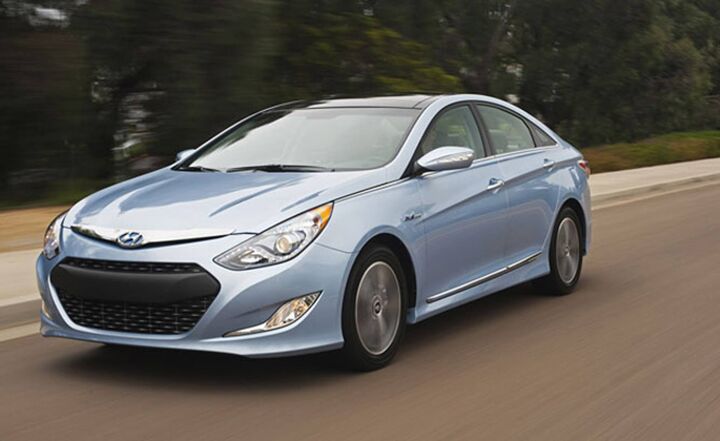
















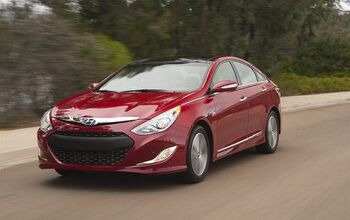



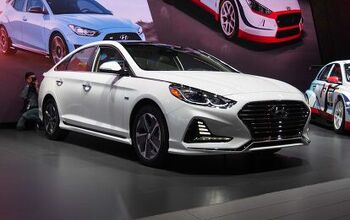
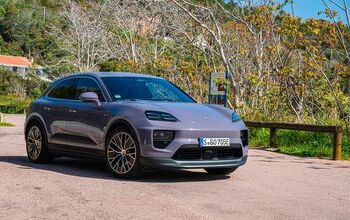
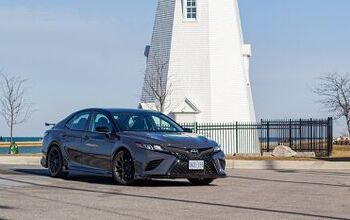
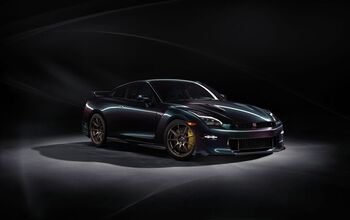


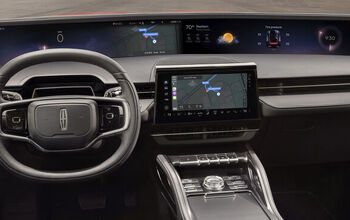


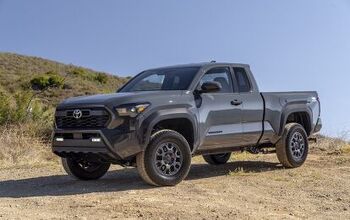
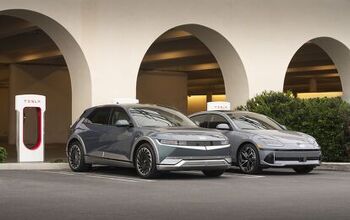
Comments
Join the conversation